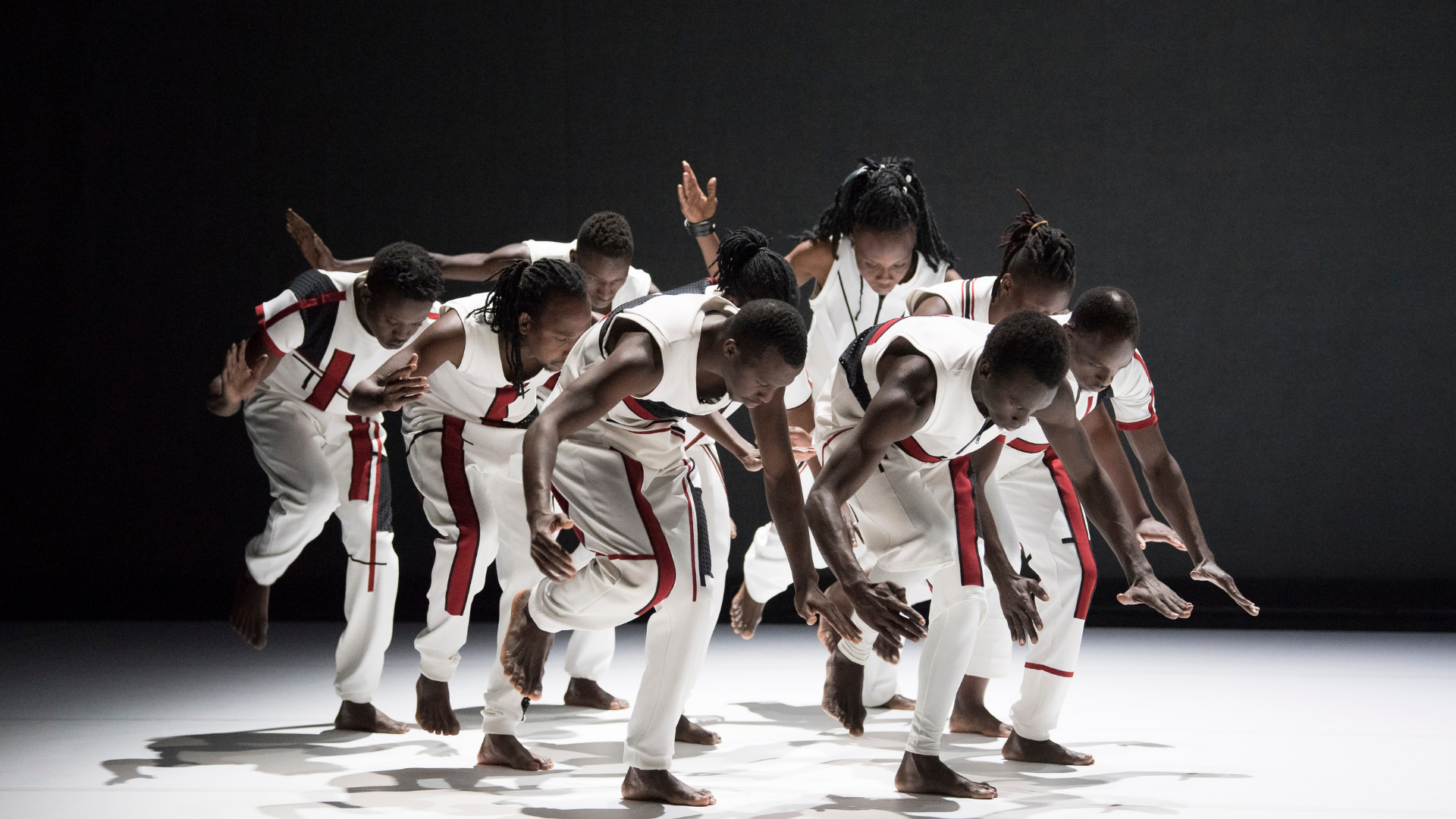
Amala Dianor and the New Generation of African Artists
Amala Dianor is a dancer, choreographer and director who was born and spent his early childhood in West Africa, Senegal. His works can be recognised by combinations of different techniques and styles.
One of his best known features is collaboration with other artists which we see in his latest project “Siguifin” which will be on the 4th and 5th of May in the Lithuanian National Drama Theatre during the international contemporary dance festival, New Baltic Dance.
In this interview, Amala Dianor shares his memories and thoughts about his childhood, African dances, creation processes and working on “Siguifin”.
How important was dance in African culture when you were living in Senegal?
For us, dance was just something we can have fun or play with. That is how I understood it because when I told my father and other family members that I wanted to become a professional dancer, their reaction was: “You can’t do that; it’s not a real world. Dance is just for having fun and that’s all”. Even people who were great dancers were joking about dancing. That was a common reaction 20-25 years ago. Now I am the only one in my family who has an artistic profession.
How would you describe traditional African dances to people who have never seen them?
I don’t know how to describe it. Just when I see it, I know that it is authentic, it is not made up. It talks to me because it came from the same place as I did. It is stronger and older than me. Have you ever seen or heard something that made you feel right? I have the same feeling for traditional African dance.
You are known as an artist who combines very different dance styles, such as hip-hop, traditional African dances and contemporary dance. How do you transform these dance styles?
I use dancers’ material. When we are working, I ask them to perform certain movements. I make the rules. But most of the time we create the movement together, by sharing our moves and combining them. We merge together everything that pops up during meetings. We try to build something out of the mixture that represents who we are as dancers.
Project “Siguifin” is a collective choreographic creation. You have created it together with choreographers Ladji Koné, Alioune Diagne and Naomi Fall. Could you tell me more about the whole creation process?
I wanted to do something in Africa. “Siguifin” is a special project about nine different dancers: three from Mali, three from Senegal and three from Burkina Faso. Me and other choreographers wanted them to improve during the process. Dancers were traveling and working in each African state for three weeks, with one choreographer at a time, creating three separate parts. My work was to respectfully use the material they have created and connect it so that everything would make sense. It was crazy. For this project I invited the new generation of African choreographers who are active in their own countries. All of them are changing the mindsets of societies about what could be done in their countries. Alioune Diagne is the owner of a cultural centre in Saint-Louis, Senegal. This centre invites a lot of dancers and has a long-standing festival. Ladji Koné is a professional dancer who serves his community in Uagadugu, Burkina Faso. For example, he has built a guard to avoid flooding. Ladji Koné is a role model for young dancers and people in general because he spends the money, earned as a professional dancer, on goods which are necessary for his community. He is making a change and I like it. Naomi Fall in Bamako, Mali organises a festival where she invites dancers from other countries to come and meet choreographers, create choreographic pieces together and present final performances.
As you already mentioned, performers of “Siguifin” are from three different African states – Mali, Burkina Faso, and Senegal. What, in your opinion, do these dancers have in common?
First of all, they want to improve themselves and be professional dancers. It is interesting because they have to go against their community ‒ in Africa and sometimes even here, in Europe, those who want to be a professional dancer will not be taken seriously by their families, friends and community. “Siguifin” dancers want to show that they can make it, and that dance can be a real job. Secondly, I wanted to give dancers an opportunity to meet each other and create this project. I wanted them to realise that it is possible to make things happen. Furthermore, love for dance is what they all really have in common.
Electro soul composer Awir Leon has created the original music for “Siguifin” and your other dance projects. Why did you choose to use electronic music together with traditional African dances? And how does electronic music harmonise together with traditional rhythms?
I started to work with Awir Leon approximately ten years ago. He is a good friend of mine, fantastic composer, and a professional dancer with whom I used to dance. “Siguifin” is a contemporary piece, so it was not about traditional dance. As I already mentioned, I was working with the material which was given to me by dancers. When dancers were working with choreographers Ladji Koné and Naomi Fall, they used traditional dance, so I also got involved.
Those who will have come to the show, will see that the mixture I made with contemporary, hip-hop, and traditional dance works. I also mixed movement with music. So there were several different levels of mixing. By the way, one of the dancers, Rama Koné, is also a singer and she will perform traditional songs from Burkina Faso.
How do you feel about coming to Lithuania and presenting “Siguifin”?
We are very excited. I was not expecting to travel this far. At first our plan was to present the performance in Senegal, Mali, Burkina Faso and France but now it will also be performed in various European countries. It makes me happy because “Siguifin“ is a fun project. Also, dancers have a chance to travel and meet Lithuanians. At the same time, Lithuanians will have an opportunity to meet them. It is fantastic.
Find out more about New Baltic Dance, and book tickets bilietai.lt.
Following the performace at New Baltic Dance, Siguifin will continue its tour to Big Pulse partner festivals, ONE DANCE WEEK (Plovdiv, Bulgaria), Side Step Festival (Helsinki, Finland) and Dublin Dance Festival (Dublin, Ireland.

